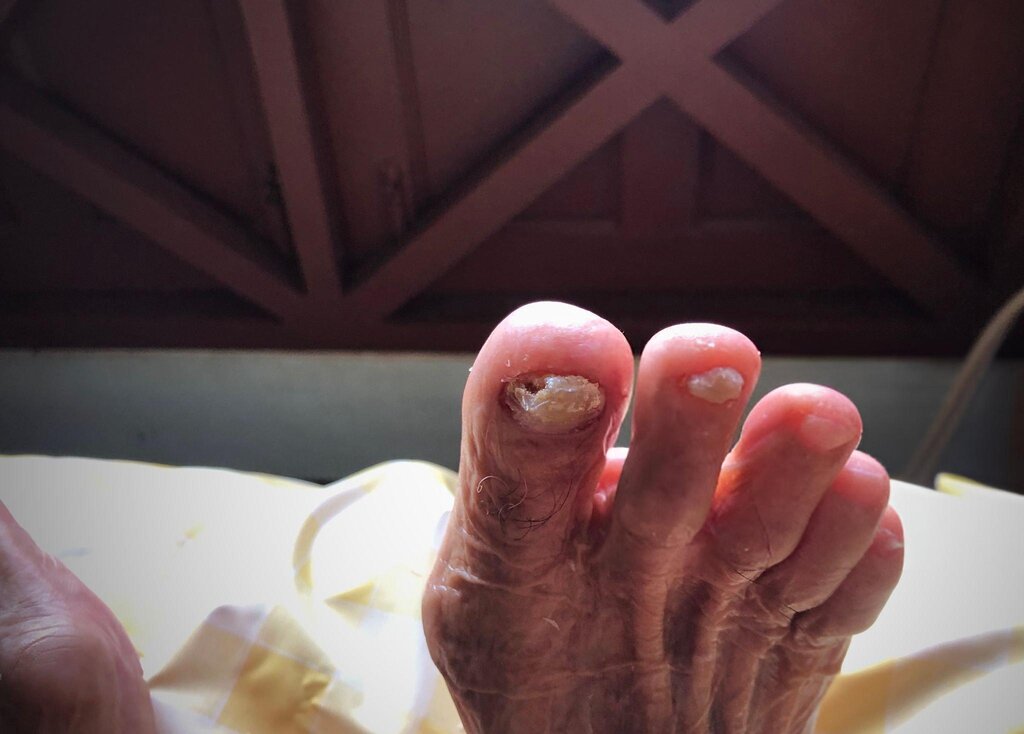When managing diabetes, it’s important to pay close attention to your feet. Diabetes can lead to various foot problems, especially affecting toenails. Understanding these signs early can help maintain better foot health. The toenail changes might seem minor at first, but they can quickly turn into bigger health concerns if overlooked.
In particular, people with diabetes should be on the lookout for specific changes in their toenails. Recognizing these changes can prevent complications. By knowing what to watch for, you can take timely action and seek the right care to keep your feet as healthy as can be.
Common Signs of Diabetic Toenail Issues
Recognizing diabetic toenail problems starts with knowing which signs to look for. These signs usually appear as visible changes in nail appearance and texture:
– Discoloration: Toenails may start to appear yellow, brown, or have unusual dark spots. This change in color could be an early warning signal of something off.
– Thickening of the Nails: A sudden increase in the thickness of your toenails might occur. This can make trimming difficult and lead to discomfort, especially in tight shoes.
– Crumbling or Brittle Texture: If your nails begin to crack or break easily, it’s time to get them checked out. Brittle nails often hint at underlying health issues potentially related to diabetes.
These common signs are crucial for identifying potential problems early. Noticing them sooner can make a world of difference in preventing further complications. If you spot any of these changes, consider consulting a foot care professional to guide you on the next steps.
Causes and Consequences
Understanding why these toenail changes occur can help manage them more effectively. Diabetes often leads to poor circulation and high blood sugar levels, both of which contribute to nail problems.
Poor circulation reduces blood flow to your feet, affecting their ability to heal and fight infection. This lack of proper blood flow can make toenails appear unhealthy, causing them to become brittle or thickened. High blood sugar also plays a role by increasing susceptibility to fungal infections, which can turn nails a yellowish hue and give rise to more significant nail issues.
These changes, if left unchecked, can lead to serious problems. Infections can develop, especially when toenails are neglected, possibly leading to complications. This underlines the importance of managing blood sugar and monitoring foot health regularly.
When to Seek Professional Help
Paying attention to persistent symptoms is key. If you feel relentless pain or notice changes in your toenails that don’t resolve, it’s important to consult a specialist. Ignored nails can become more than just a cosmetic issue, so spotting any signs of infection like redness, swelling, or discharge is crucial. Persistent symptoms warrant a closer look. A professional can provide the right guidance, ensuring you tackle any underlying problems head-on without delay.
Preventive Measures
Prevention comes from routine care and being mindful of any changes. Regular foot inspections can greatly assist in catching signs early. Here are some steps to keep your feet healthy:
– Check your feet daily for cuts, blisters, or any abnormalities.
– Maintain proper foot hygiene by washing and drying thoroughly.
– Trim nails straight across to avoid ingrown toenails.
Wearing suitable footwear, like diabetic shoes, offers extra protection. These specially designed shoes help in reducing pressure points, preventing injuries, and minimizing complications.
Taking Care of Your Feet
Consistent care is essential for managing diabetic toenail issues. Monitoring blood sugar levels constantly and ensuring they remain stable support foot health. Regular check-ups with a healthcare professional should be part of your routine. They can help identify problems before they progress, allowing for timely and effective intervention.
Technology can also aid in treatment. Tools like diagnostic ultrasound and advanced pain lasers offer non-invasive ways to address specific foot concerns, promoting healing more efficiently.
Final Thoughts on Foot Health in Milwaukee
Foot health for diabetics requires care and attention to detail. Making these preventive steps a part of your routine will help keep your feet in the best shape possible, especially in Milwaukee where local specialists are readily available. Tailoring advice to your region ensures that the unique needs of Milwaukee residents are met consistently.
By staying proactive, you can maintain healthy feet and avoid the pitfalls that come with diabetic nail problems. Empower yourself with knowledge and care, setting a strong foundation for better foot health in the future.
Keeping feet healthy is crucial for those managing diabetes, especially when it comes to toenail problems. With preventive measures and timely consultations, you can minimize risks and maintain foot health. For more personalized care, Waukee Feet offers comprehensive diabetic foot care services to help you safeguard your overall wellness. Learn more about how we support patients dealing with diabetes and toenail problems with targeted treatment options designed for long-term foot health.

